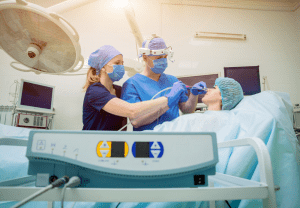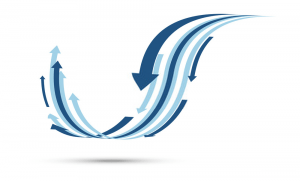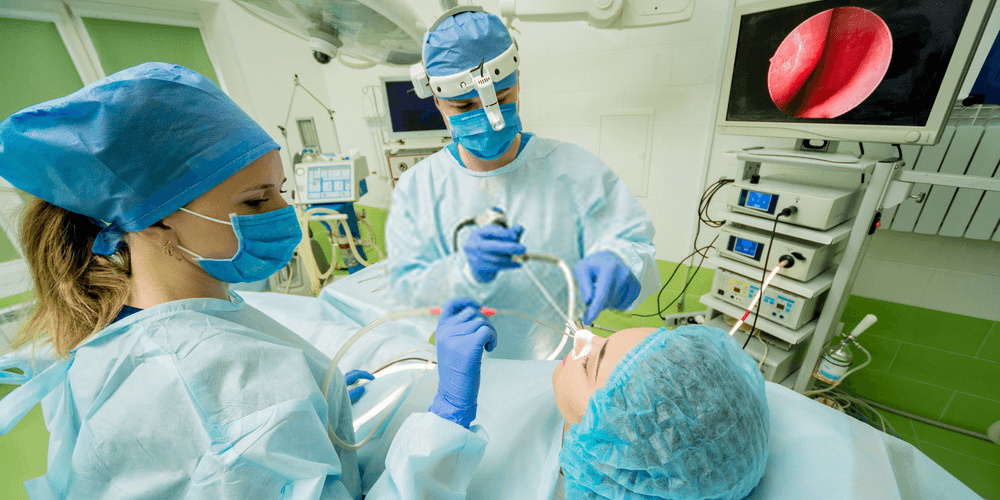![]() Views: 757
Views: 757
How effective is Coblation Treatment for Enlarged Turbinates?
The nose is made with built-in air filters inside your nose that are fleshy structures. They help filter, warm, and add moisture to the air that we breathe. They are called turbinates. See, when they are healthy, they do a good job of regulating the temperature and moisture level. But, when they swell, get enlarge, or displaced, they cause a nasal blockage which causes nasal blockage.
Dedicated Support at Every Step!
Our Doctors are available 24 hours a day, 7 days a week to help you!
The nose is made with built-in air filters inside your nose that are fleshy structures. They help filter, warm, and add moisture to the air that we breathe. They are called turbinates. See, when they are healthy, they do a good job of regulating the temperature and moisture level. But, when they swell, get enlarge, or displaced, they cause a nasal blockage which causes nasal blockage.
Table of Contents
What problems do enlarge turbinates cause?
Evidently, a lot of people experience issues with their turbinates at various stages in their life. Generally, the problems and difficulties in breathing usually go away on their own. Sometimes they need medical treatment. Some common and reversible causes of turbinate enlargement include:
- Allergies
- Infections
- Weather changes
- Stress
- Medications
- Hormonal changes

But there are some causes of turbinate enlargement that can’t easily be reversed. They may require a turbinate reduction. These include:
- Chronic infections ( Also Read: How to cure chronic sinus permanently? )
- Severe allergies
- Anatomic issues with the nose
To sum up, the procedure for the reduction of turbinates is recommended for those who undergo septoplasty. It is a surgery to correct a deviated septum. A deviated septum is a shift of the bone and cartilage between the two nostrils inside the nose. It can cause squeezing of the turbinates and trouble breathing. Besides, a turbinate reduction can help further open up the airways of a person who’s had a septoplasty.
Quick Check: Is it possible to straighten the deviated nose?
No Cost EMI, Hassle-free Insurance Approval
Know the types of procedures for turbinate reduction
Though there are various methods to reduce the size of the turbinates. Some are less invasive than others. In some cases, doctors recommend surgeries that shrink the turbinates. Therefore, this doesn’t involve the removal of any underlying bone or tissue. To perform the same, a surgeon uses a special needle-like device. It heats the turbinates using a heat source or energy waves. The same leads to the formation of scar tissue, reducing the turbinates’ size.

These procedures fall under the purview of cauterization, coblation, and radiofrequency reduction. They usually take about 10 minutes and can be performed under local anesthesia in a surgeon’s office. Local anesthesia is injected into the nasal tissues using a needle. Usually, no special preparation is needed. These procedures are often used in less severe cases of turbinate enlargement.
Surgical removal of excess growth for better nasal flow
In other cases, a doctor may recommend that parts of the turbinates be surgically removed. These procedures are usually done in an operating room under general anesthesia. They use a gas that you inhale or with an anesthetic given intravenously. A patient shouldn’t eat or drink beforehand, usually starting the night before. You should also avoid taking medications containing aspirin or ibuprofen. To be fair, for two weeks before surgery to minimize the risk of bleeding. In this procedure, a surgeon cuts into the turbinates and remove some part of the bone. The same is done beneath the turbinates, to reduce their overall size.
They may also use a small handheld device that can shave away some of the tissue. Surgical removal of underlying bone or tissue surrounding the turbinates is usually reserved for more serious cases of turbinate enlargement. It’s often done during a septoplasty. A septoplasty also involves cutting into the nasal cavity to correct a deviated septum.
What can I expect from recovery after turbinate reduction?
This is dependent on the patient and the type of procedure taken. For minimally invasive turbinate reductions, recovery is usually quick and not very painful. In about three weeks, the new scar tissue in your nose should be completely healed. On the other hand, more invasive turbinate reduction surgery may take three to six months until complete recovery.

After a certain period, the nasal tissues will heal into place. To avoid possible bleeding and swelling, avoid strenuous activities and blowing your nose for several weeks after your surgery. Your doctor may also recommend you elevate your head while sleeping. Besides, wear clothing that fastens in front to avoid irritating your nose.
Using nasal saline irrigation and antibiotic ointment during this time can help control these side effects. The more invasive turbinate reduction procedures involve some side effects. They can be:
- bleeding
- swelling
- irritation
- infection
- dryness of the nasal cavities
There’s also a possibility that turbinate tissue may regrow after surgery, making it necessary to undergo further turbinate reduction treatment.
The cost of this surgery largely depends on how much tissue is removed and how long the removal procedure takes. With insurance, the cost may be as little as several hundred dollars, or even free, depending on your health plan.
Before Goodbye
The goal of turbinate reduction surgery is to shrink the size of the turbinates without removing too much tissue. A lack of turbinate tissue may cause the nasal cavity to become very dry and crusty. The use of coblation in the surgical procedure leads to faster recovery and less scar tissue. In some cases, a reduced turbinate may regrow, requiring repeat surgery to reduce their size. In most cases, turbinate reductions are successful at opening the airways and making breathing easier. By following your surgeon’s pre-operative and after-care instructions, you can speed your healing and maximize your results.
Also Read: Correlation between a deviated septum and chronic sinusitis!














